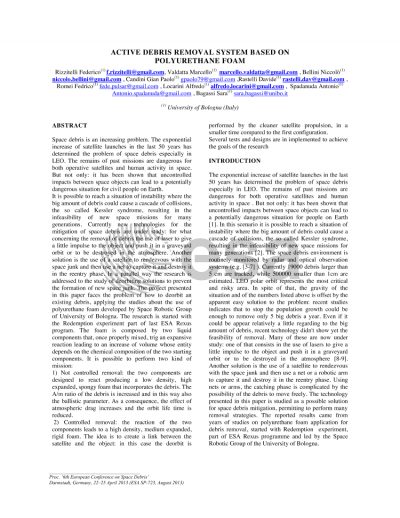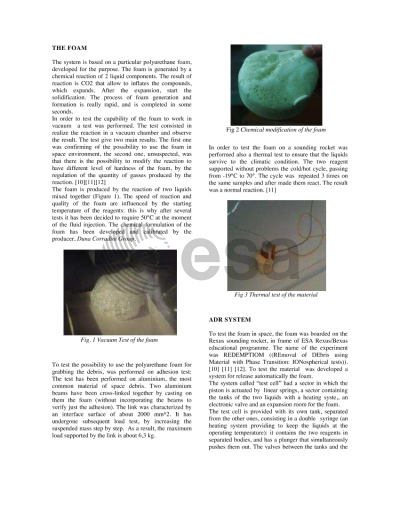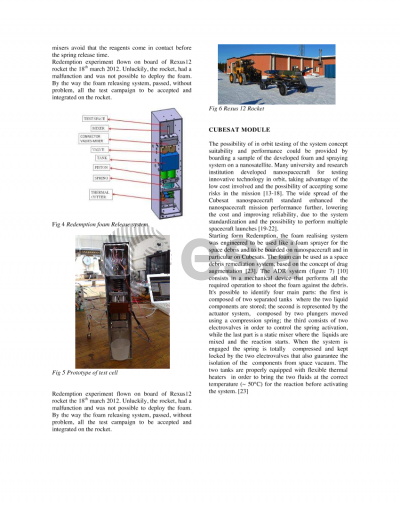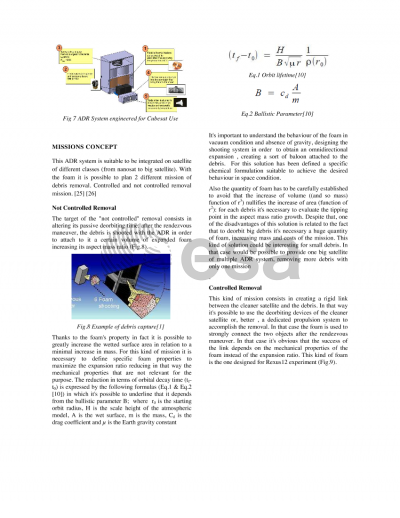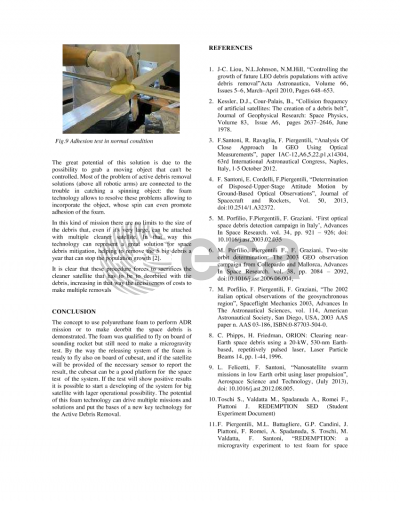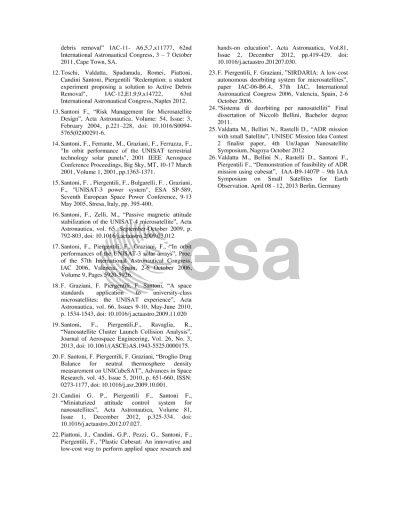Document details

Abstract
Space debris is an increasing problem. The exponential increase of satellite launches in the last 50 years has determined the problem of space debris especially in LEO. The remains of past missions are dangerous for both operative satellites and human activity in space. But not only: it has been shown that uncontrolled impacts between space objects can lead to a potentially dangerous situation for civil people on Earth. It is possible to reach a situation of instability where the big amount of debris could cause a cascade of collisions, the so called Kessler syndrome, resulting in the infeasibility of new space missions for many generations. Currently new technologies for the mitigation of space debris are under study: for what concerning the removal of debris the use of laser to give a little impulse to the object and push it in a graveyard orbit or to be destroyed in the atmosphere. Another solution is the use of a satellite to rendezvous with the space junk and then use a net to capture it and destroy it in the reentry phase. In a parallel way the research is addressed to the study of deorbiting solutions to prevent the formation of new space junk. The project presented in this paper faces the problem of how to deorbit an existing debris, applying the studies about the use of polyurethane foam developed by Space Robotic Group of University of Bologna. The research is started with the Redemption experiment part of last ESA Rexus program. The foam is composed by two liquid components that, once properly mixed, trig an expansive reaction leading to an increase of volume whose entity depends on the chemical composition of the two starting components. It is possible to perform two kind of mission: 1) Not controlled removal: the two components are designed to react producing a low density, high expanded, spongy foam that incorporates the debris. The A/m ratio of the debris is increased and in this way also the ballistic parameter. As a consequence, the effect of atmospheric drag increases and the orbit life time is reduced. 2) Controlled removal: the reaction of the two components leads to a high density, medium expanded, rigid foam. The idea is to create a link between the satellite and the object: in this case the deorbit is performed by the cleaner satellite propulsion, in a smaller time compared to the first configuration. Several tests and designs are in implemented to achieve the goals of the research.
Preview
